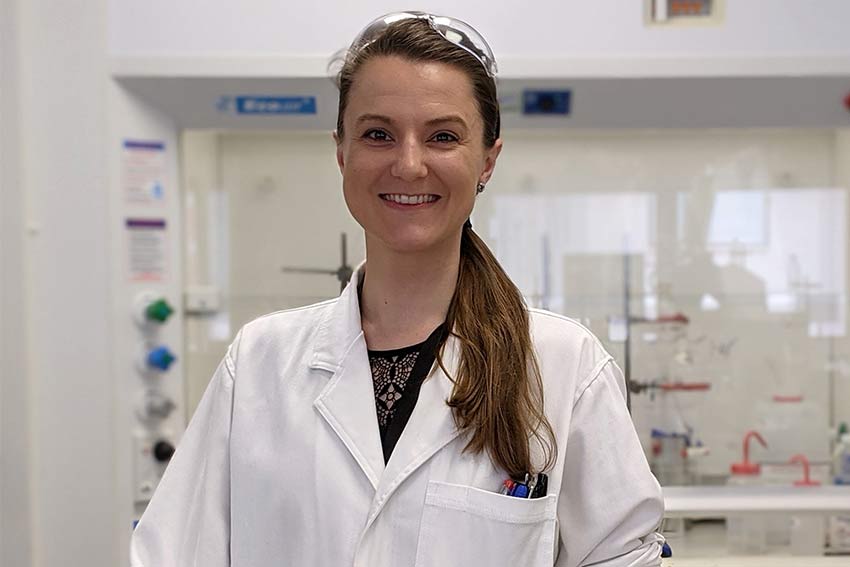‘Switching on’ drugs to target disease

To improve drug treatment outcomes and reduce side effects, AUT researchers are looking for ways to more accurately target drugs to work on diseased cells and bypass healthy cells.
AUT researcher and lecturer Dr Cassandra Fleming is working at the forefront of a relatively new area of medicinal chemistry called photopharmacology, using light to track and trigger drugs inside the body so they release their therapeutic properties at the right time and in the right place.
“One of the major challenges in drug development programmes is preventing the drug from binding to other biological targets and interfering with healthy cells, which is when you get undesired side effects,” says Dr Fleming, who gained her PhD in organic chemistry from Deakin University before taking on postdoctoral research roles in Sweden including as a Marie Curie Postdoctoral Research Fellow at the University of Gothenburg.
“With this research we are looking at administering drugs in a nonactive form and then triggering activation with light once the drug reaches the desired location — effectively ‘switching on’ the drugs at the right time.”
The goal is not just to target the right cells in the body, but the right compartments within those cells.
Dr Fleming’s work is just one example of the life-changing research happening in labs around the university, and for students at AUT’s School of Science it means they get to learn about — and, as postgraduate students, contribute to — globally significant research projects.
In the latest Times Higher Education university rankings, AUT ranked first in Australasia for its global research impact.
A key focus for Dr Fleming’s research project, the recipient of a Marsden Fund Fast-Start grant, is to better understand the GSK-3 enzyme which has been identified as a promising target for the treatment of Alzheimer’s disease.